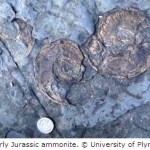
Bogotá, Colombia – A slow-moving canoe full of marine biologists gingerly steers through a narrow Amazon tributary. On both sides, treetops surface above a flooded forest. Ten minutes later the group emerges onto a huge and placid oval lake, the Cocará lagoon, located on the Peruvian side of the Putumayo river. Suddenly, a powder-pink dolphin jumps and dives in an elegant arc.
This is the 11th expedition to count river dolphins in South America, a critical way to assess not only the dolphins’ numbers, but also the health of rivers and related biodiversity. In June 2010, the scientific team of the Omacha Foundation set sail from Puerto Leguízamo to evaluate how healthy the dolphins and their habitats are in the three-border area along the Putumayo river, where conservation is crucial for the Amazon Biome.
River dolphins are an umbrella species: a high population is a sign that the rivers are healthy as well as other land and aquatic species.
“When rivers deteriorate in quality, dolphins disappear first,” said Saulo Usma, Fresh Water Coordinator for WWF Northern Amazon & Chocó-Darién Regional Programme.
Ultimately, scientists hope this research will lead to better protection of South America’s freshwater dolphins, and the rivers they call home.
A Major Venture
Since 2006, the Omacha Foundation, with WWF support, has travelled more than 4,200 kms along 12 of the most important rivers in South America. In the past four years, they have spotted more than 4,000 dolphins in the Orinoco and Amazon basins, broken down among three different species: the grey (Sotalia fluviatilis), the pink (Inia geoffrensis) and the Bolivian (Inia boliviensis).
There are an estimated 40,000 thousand river dolphins in the region, and even though this may sound like a healthy population, dolphins are more threatened now than ever. Deforestation, water pollution from mining, overfishing, the use of dolphin meat as bait and infrastructure projects are some of the biggest threats to these species.
As recently as four years ago, data on river dolphin populations in the Orinoco and Amazon basins, two major fresh water reservoirs in the planet, was not sufficient. A standardized counting method and consistent statistics were also missing.
Scientists, as well as other environmental organizations, convinced of the necessity to persuade governments to give priority to the Orinoco and Amazon basins’ conservation, decided to undertake a journey through the most important rivers in South America in countries like Colombia, Venezuela, Bolivia, Peru, Ecuador and some parts of Brazil, to finally learn how many dolphins live in this region, their health, and how to develop a long-term conservation programme.
The dolphin census is the brain-child of Fernando Trujillo, Director of the Omacha Foundation. Trujillo adapted a model for counting and extrapolating data about dolphins designed by statisticians at St. Andrew’s University in Scotland and has carried out 11 expeditions so far.
The method is being applied to a similar survey in Asia, which hosts the world’s only other significant population of freshwater dolphins.
A Charismatic Symbol
By monitoring the dolphins and their health, the biologists hope that these aquatic mammals, with their playful habits and unique appearance, could become a charismatic symbol for preserving the Orinoco and Amazon basins.
Today, there is a plan supported by WWF to protect freshwater dolphins in South America, and countries like Bolivia and Colombia would be the first ones to implement it, using some of this research as a basis.
Governments are being encouraged to do more to protect dolphins, there is a network of 80 researchers trained to be part of other expeditions outside their countries, and agreements with local indigenous communities to apply sustainable fishing methods have been settled.
Yet, the problem with fisheries, the most difficult one to deal with, still remains.
Dolphins are being used as bait to catch Mota (Calophysus macropterus), a scavenger fish from the Orinoco and Amazon basins which fish sellers discovered could replace the catfish capaz – a highly demanded species from the Magdalena river, almost on the brink of extinction – and then sell it in the main cities in Colombia under the name Capaz. “So it is essential to put this issue on the international agenda,” asserted Trujillo.
The Science of Counting Dolphins
Counting dolphins is a simple task but has its own specialized methodology. Math formulas are used to calculate the speed at which dolphins swim as well as their distance in relation to the riverbank.
The researchers divide into two groups. One team goes to the fore, the other to the aft. Both groups carry a compass, binoculars, a GPS, a pencil and index cards to record the time, the angle, distance coordinates, if it’s gray or pink, and the number of dolphins spotted.
The boat zigzags at a speed of 12 kms per hour and a hundred meters from the riverbank. After having travelled two kilometres, it crosses to the other side.
Asia, The Mirror
Researchers fear that the Amazonian dolphins could reach a similar situation to those in Asia, where in some places dolphins have been declared extinct.

“We don’t want to be in the same situation as in the Yangtze, where dolphin sighting has become an exception,” said Trujillo.
While some believe there is still an opportunity here for river dolphin conservation, others see the mirror of Asia as a blurred image.
María Delgado, a 29-year-old subsistence fisherwoman, thinks environmentalists are creating an unwarranted alarm. “There are plenty of fish, they just know how to avoid being caught,” she said.
Scientists make clear the threats in South America are still at a manageable stage. “The fishery industry situation, pollution from mining and oil exploitation, deforestation and bycatch, can be slashed back if we involve all actors and encourage governments to get on board,” concluded Usma.
The plan, called the “Action Plan for South American River Dolphins: 2010-2020” hopes to address these threats.
About WWF
WWF is one of the world’s largest and most respected independent conservation organizations, with over 5 million supporters and a global network active in over 100 countries. WWF’s mission is to stop the degradation of the earth’s natural environment and to build a future in which humans live in harmony with nature, by conserving the world’s biological diversity, ensuring that the use of renewable natural resources is sustainable, and promoting the reduction of pollution and wasteful consumption. For more information, visit www.panda.org.
Source: WWF.













